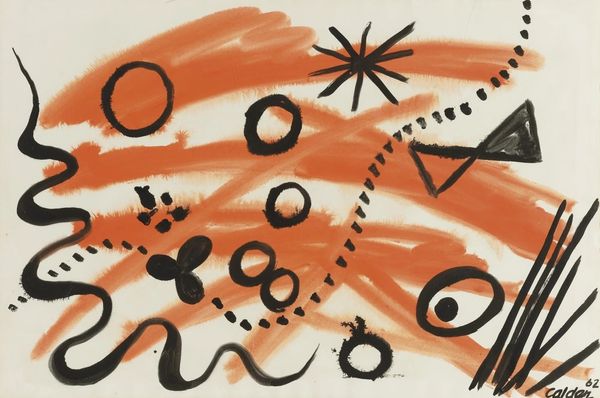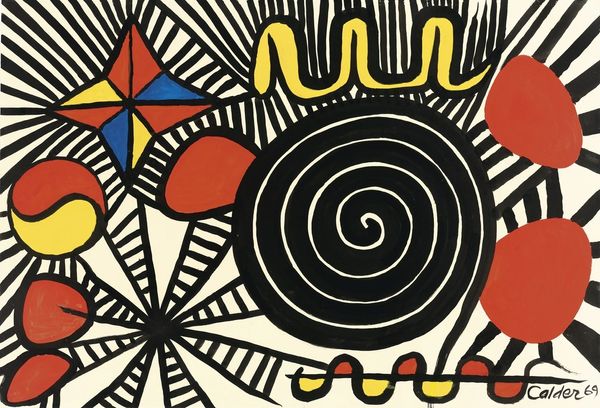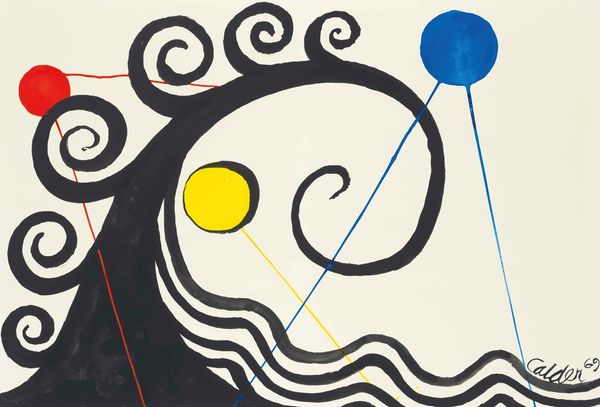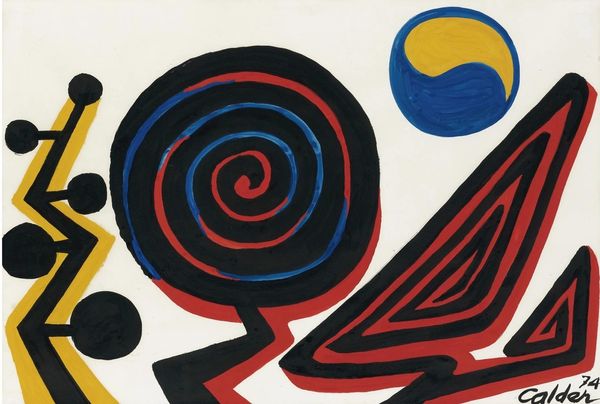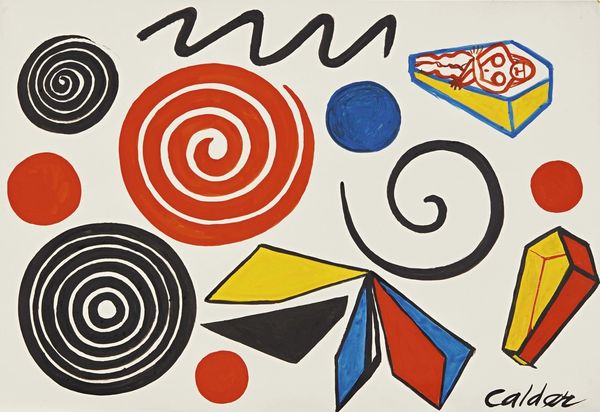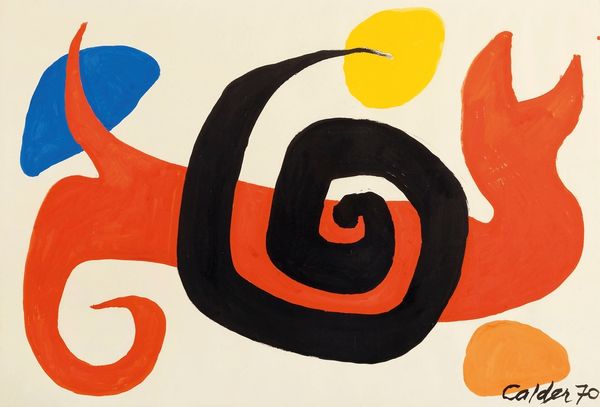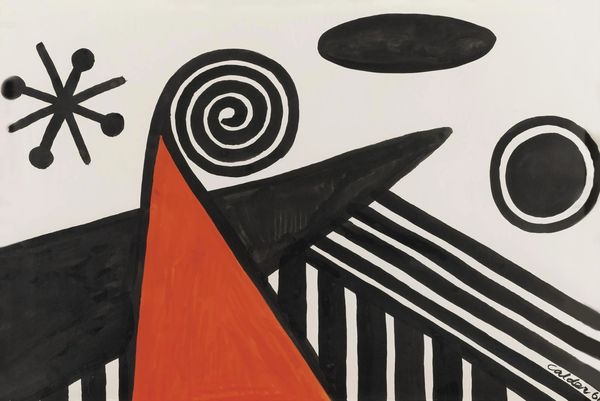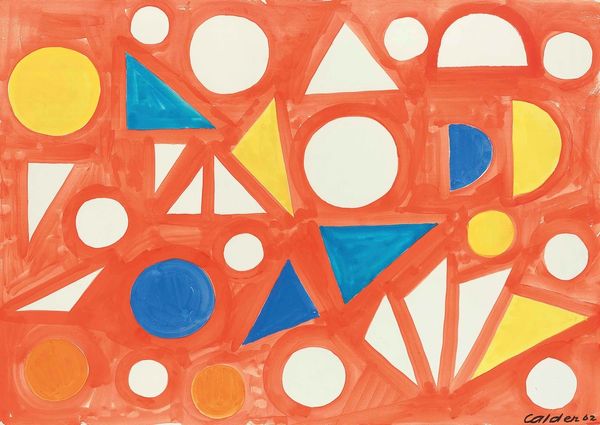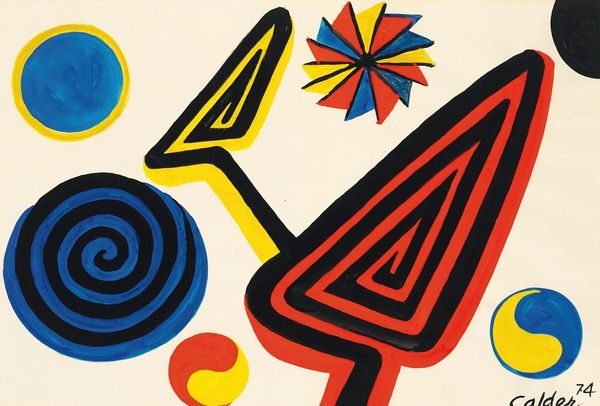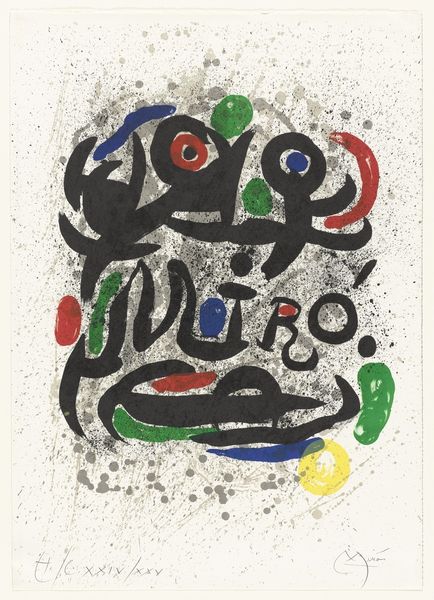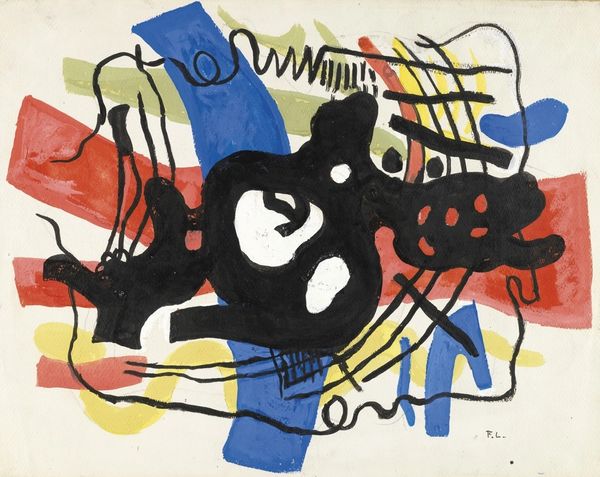
#
neo-pop
Copyright: Modern Artists: Artvee
Curator: Here we have Keith Haring’s “Ludo #4,” created in 1985 using acrylic paint and printing techniques. Editor: It's quite striking. My first thought is organized chaos. The red and black lines clash and harmonize at the same time. Is it supposed to be a figure? Curator: It's figuration leaning heavily into abstraction. Haring's process often involved responding to the urban environment. Think of the subway drawings, immediate and accessible, bypassing the traditional art market to speak directly to the people. This print echoes that urgency through its bold simplicity. Editor: You know, looking closer, the production method, the layering of paint upon a printed base—it makes me think of how urban landscapes are constructed: layers of posters, graffiti, signage, all interacting and decaying over time. What sociopolitical message, if any, do you read from that materiality? Curator: Definitely considerations about accessibility and the means of production resonate here. Haring challenged notions of artistic ownership and exclusivity by producing affordable artworks like this print, in this edition. Moreover, I think there is a very important AIDS activism, visible in the use of bodily figures. I always think about how Haring put art at the service of AIDS awareness during a period of intense stigma and misinformation. Editor: Absolutely. And considering Haring’s interest in symbols and universal messages, that X-ed out head seems especially potent in the context of a health crisis and social anxieties surrounding marginalized bodies. The piece is a palimpsest, and reveals layer after layer of the maker's choices of subject matter. Curator: He saw art as a tool for communication and activism, pushing it into the streets and clubs to reach audiences often excluded by conventional institutions. It makes me consider what it meant to distribute images and messages within the public sphere at that time. Editor: For me, Haring’s blend of process, materials, and pop sensibility reminds us that art is not a rarefied activity, but one intimately tied to the means of its making and the context in which it is received. It’s both of its moment and a resonant message today.
Comments
No comments
Be the first to comment and join the conversation on the ultimate creative platform.

